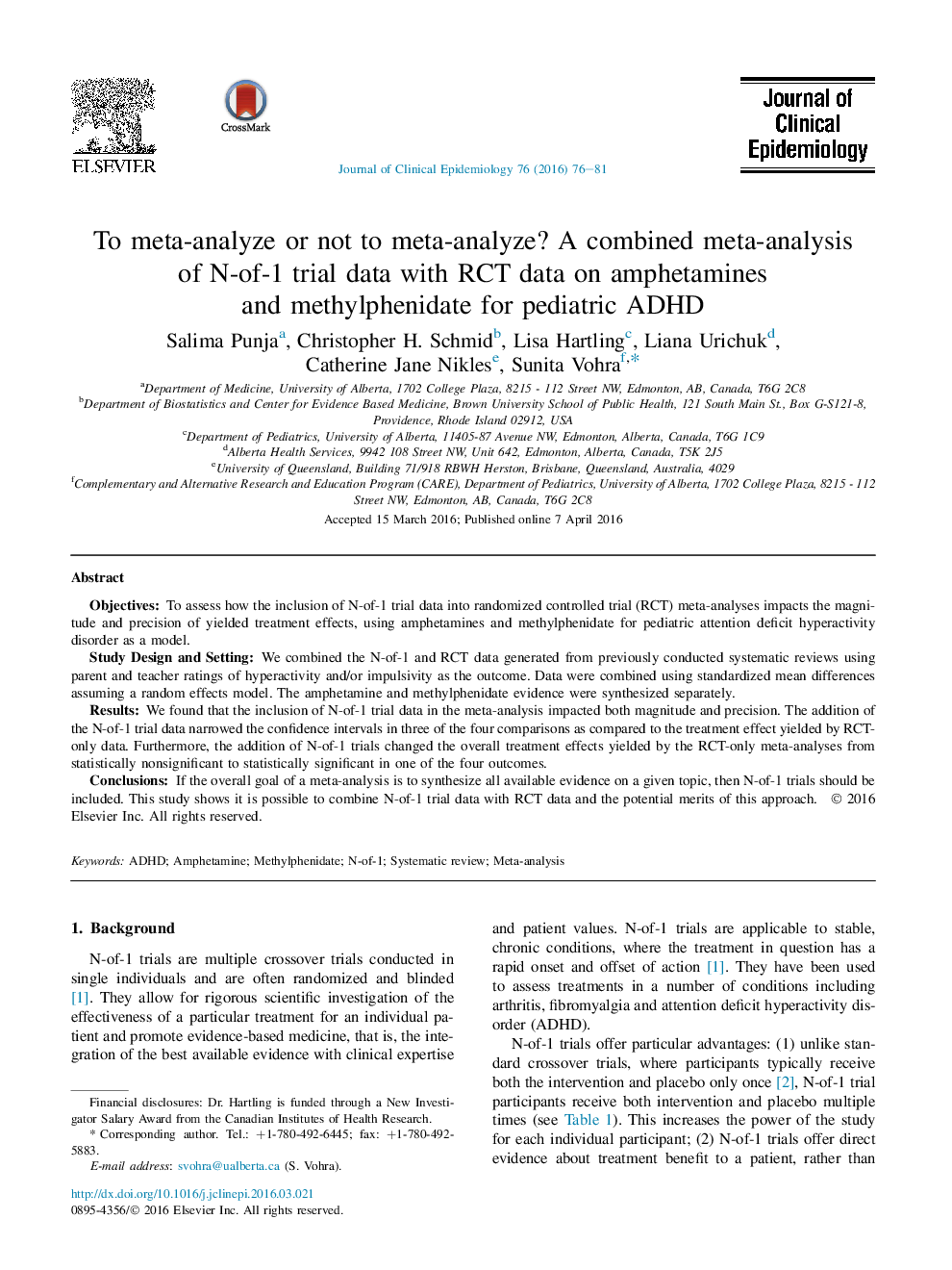| Article ID | Journal | Published Year | Pages | File Type |
|---|---|---|---|---|
| 5121930 | Journal of Clinical Epidemiology | 2016 | 6 Pages |
ObjectivesTo assess how the inclusion of N-of-1 trial data into randomized controlled trial (RCT) meta-analyses impacts the magnitude and precision of yielded treatment effects, using amphetamines and methylphenidate for pediatric attention deficit hyperactivity disorder as a model.Study Design and SettingWe combined the N-of-1 and RCT data generated from previously conducted systematic reviews using parent and teacher ratings of hyperactivity and/or impulsivity as the outcome. Data were combined using standardized mean differences assuming a random effects model. The amphetamine and methylphenidate evidence were synthesized separately.ResultsWe found that the inclusion of N-of-1 trial data in the meta-analysis impacted both magnitude and precision. The addition of the N-of-1 trial data narrowed the confidence intervals in three of the four comparisons as compared to the treatment effect yielded by RCT-only data. Furthermore, the addition of N-of-1 trials changed the overall treatment effects yielded by the RCT-only meta-analyses from statistically nonsignificant to statistically significant in one of the four outcomes.ConclusionsIf the overall goal of a meta-analysis is to synthesize all available evidence on a given topic, then N-of-1 trials should be included. This study shows it is possible to combine N-of-1 trial data with RCT data and the potential merits of this approach.
